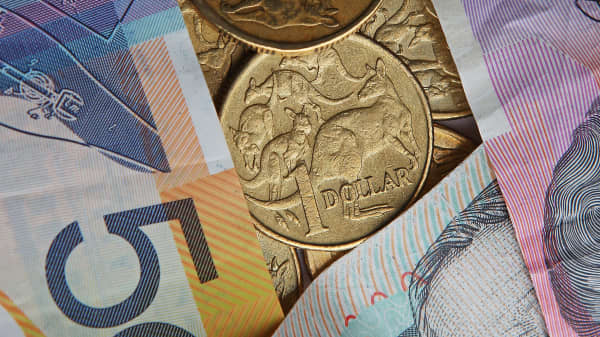The Australian dollar is down over 11 percent so far this year and is the second worst performing major currency in the world after the yen, but for the country's central bank, it's still not weak enough.
In a statement accompanying its decision to keep interest rates on hold on Tuesday, the Reserve Bank of Australia (RBA) said that while the Aussie dollar has depreciated around 10 percent since early April, it remains at a high level.
"It is possible that the exchange rate will depreciate further over time, which would help to foster a rebalancing of growth in the economy," the RBA said. As a result, the Aussie dollar fell to an Asian session low of $0.9155.
(Read More:
Australia Central Bank on Hold, Says Currency to Fall More
)
Analysts tell CNBC that talking down the currency works for the RBA as it allows the central bank to stimulate the economy without actual monetary easing.
"I think they'd [the RBA] be quietly happy if the Aussie goes down, because they no longer have to cut interest rates and if the currency settles somewhere in the mid-80s or low 80s, they'd be very happy," Kumar Palghat, director of Kapstream, which runs fixed income funds, said.
Matthew Circosta, economist at Moody's Analytics said he thinks the RBA's cutting cycle is over, because of the continued weakness expected in the Australian dollar, bringing it back in line with fundamentals.
"The key for the Aussie dollar is that it's going to be much lower in six to 12 months than it is now," Circosta said. "It was stubbornly stronger in the last 12 months, even though commodity prices had fallen, interest rates were being cut, and China was slowing."




